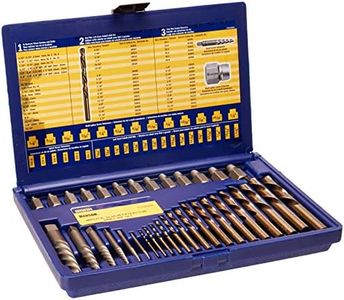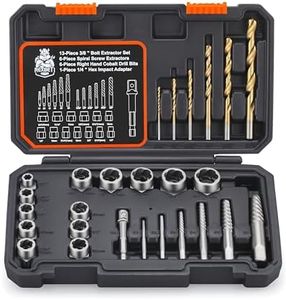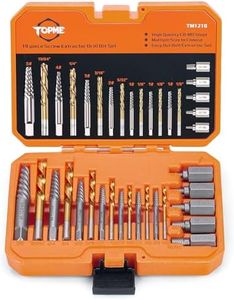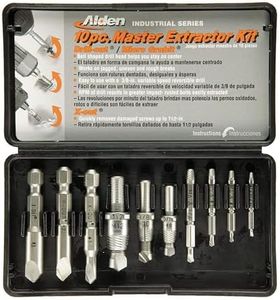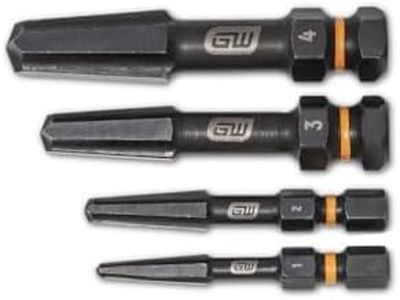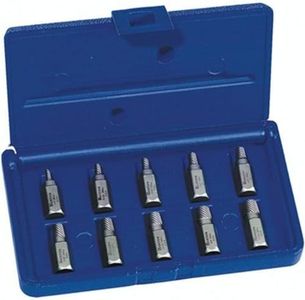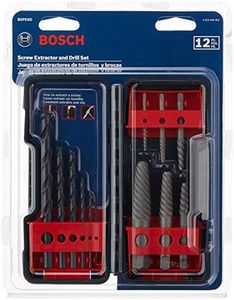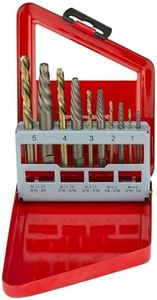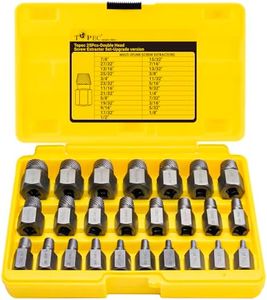We Use CookiesWe use cookies to enhance the security, performance,
functionality and for analytical and promotional activities. By continuing to browse this site you
are agreeing to our privacy policy
10 Best Screw Extractors
From leading brands and best sellers available on the web.Buying Guide for the Best Screw Extractors
Choosing the right screw extractor can make a frustrating job much simpler, whether you’re a DIY enthusiast or just working on a home repair. A screw extractor is a tool used to remove broken or stripped screws that can’t be taken out with a regular screwdriver. When picking a screw extractor, it’s important to understand what features matter most so you can be sure the tool will work well for your needs and the types of screws you usually encounter.Extractor TypeScrew extractors generally come in two main types: spiral flute and straight flute. Spiral flute extractors are twisted and grip the screw as you turn them counterclockwise, making them good for most common screws. Straight flute extractors have straight ridges and are often used for larger or harder screws. Your choice should be guided by the types of screws you expect to remove most often—spiky, damaged wood screws work well with spirals, while bolts or hardened screws are sometimes better handled by straight flutes.
Size RangeExtractors are designed for specific screw sizes. Kits usually come with several extractors to cover a range. It's important because using the right size ensures a proper grip and reduces the risk of snapping the extractor or damaging the screw further. Smaller extractors work with tiny screws found in electronics, while larger ones handle heavy-duty construction or automotive bolts. Consider what kinds of screws you typically deal with and make sure your extractor set covers those sizes.
Material & Build QualityMost screw extractors are made from tough steels like high-speed steel or carbon steel, which affect how well they resist bending or breaking. This matters because a brittle or soft extractor can snap under pressure, leaving you in a worse situation. High-quality steel is best for tough jobs and occasional use, while lighter-duty extractors may be okay for infrequent household repairs. If you often deal with seized or rusted screws, prioritize robust material.
Ease of UseSome extractors are easier to use than others, with features like hex shanks (which work with power drills), easy-to-follow markings, or dual-ended designs that allow both drilling and extracting without changing the tool. If you’re new to using extractors or want to save time, look for these user-friendly features. If you already have experience, you may be comfortable with more traditional designs.
Compatibility With ToolsExtractors work with either hand tools like T-handles or tap wrenches, or with power drills. Some only fit certain types of handles or chucks. You’ll want to be sure that the extractor matches tools you already own or plan to use. If you expect to use a cordless drill for extracting, make sure the extractor has a compatible shank size and shape; for manual extraction, check that you have the right wrench.
